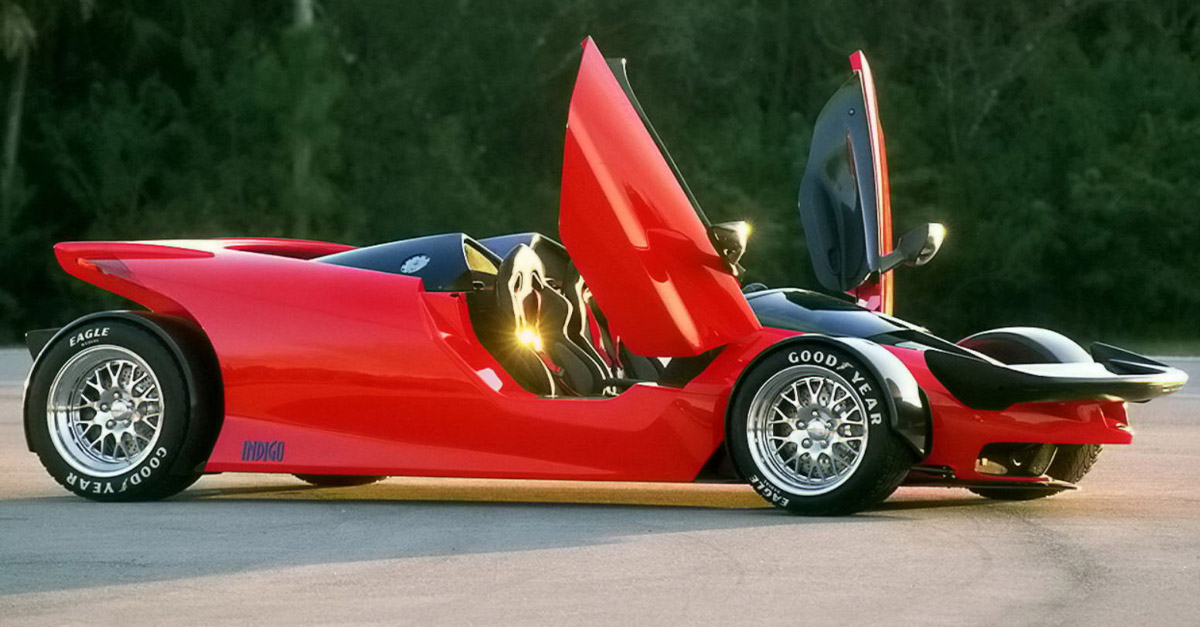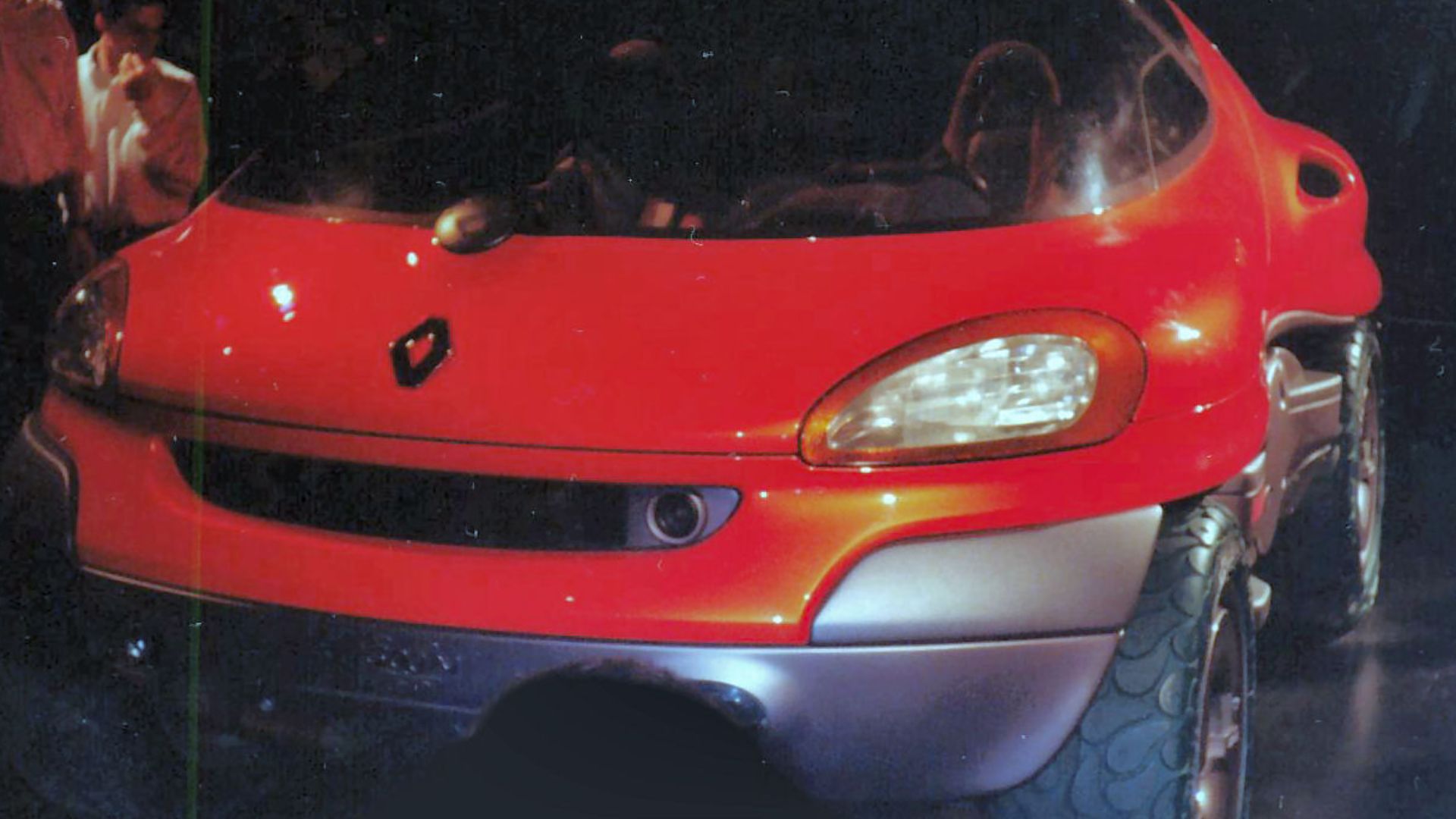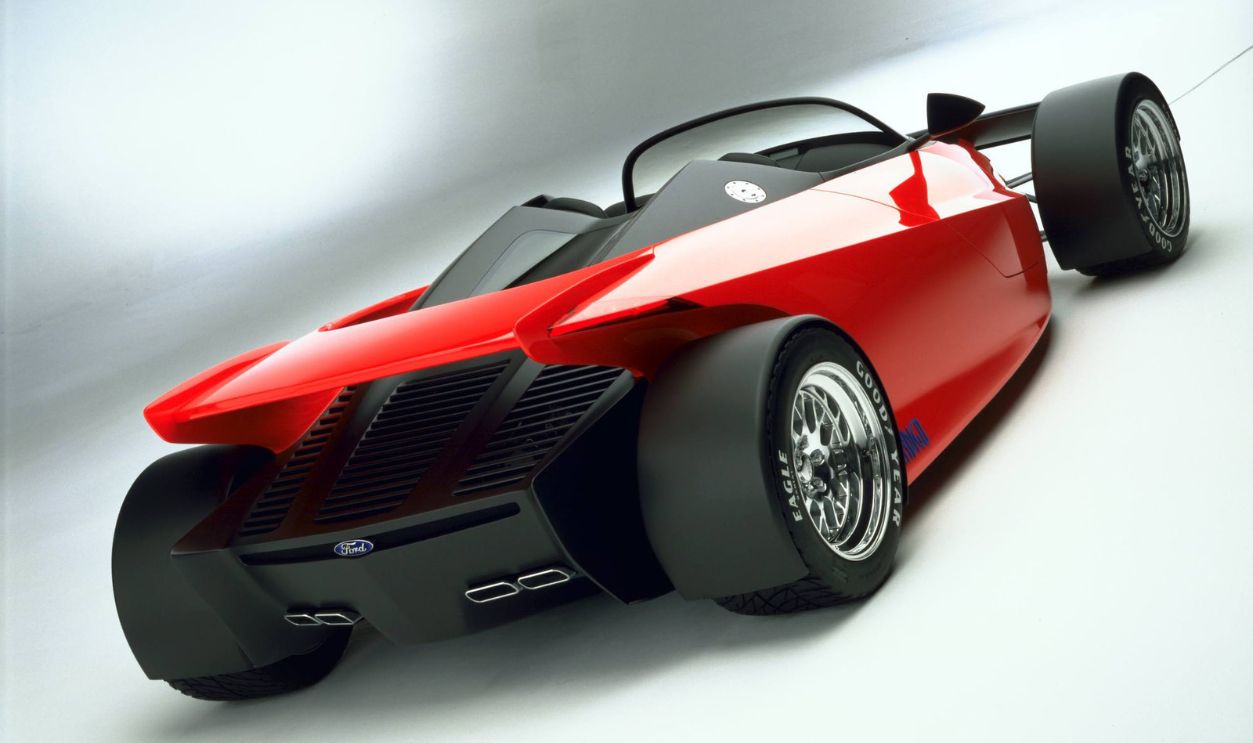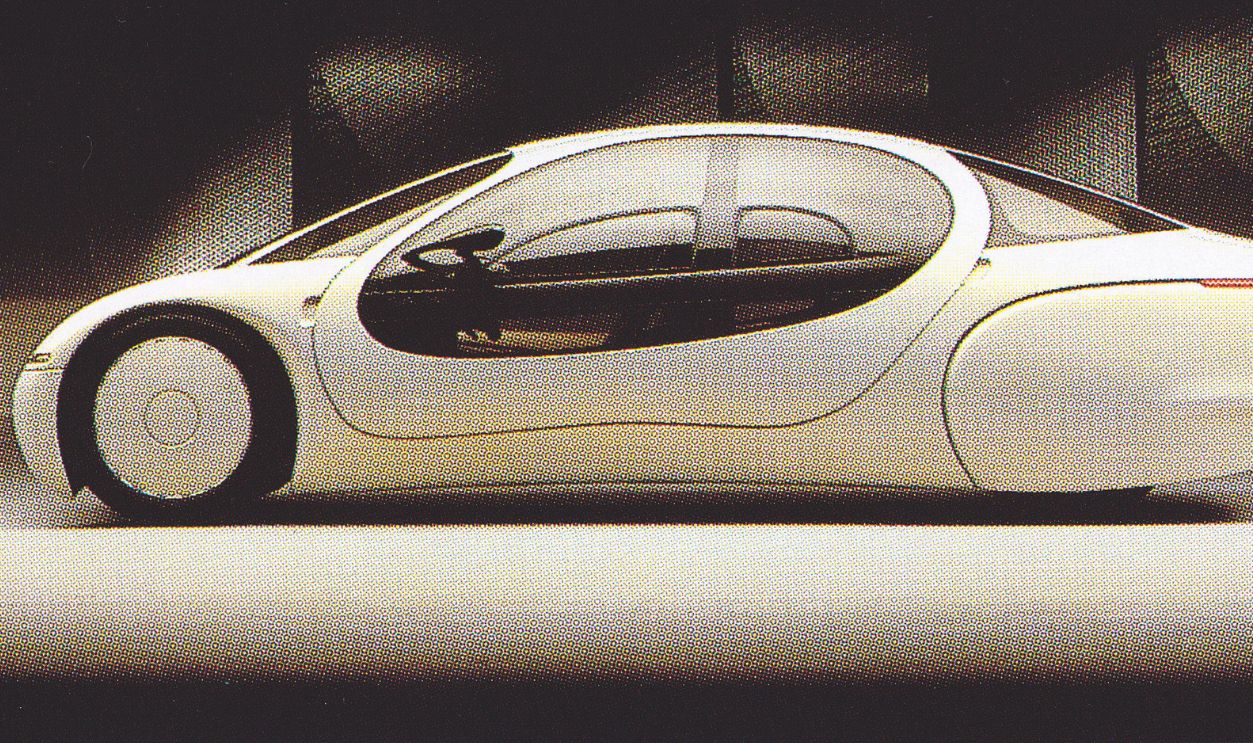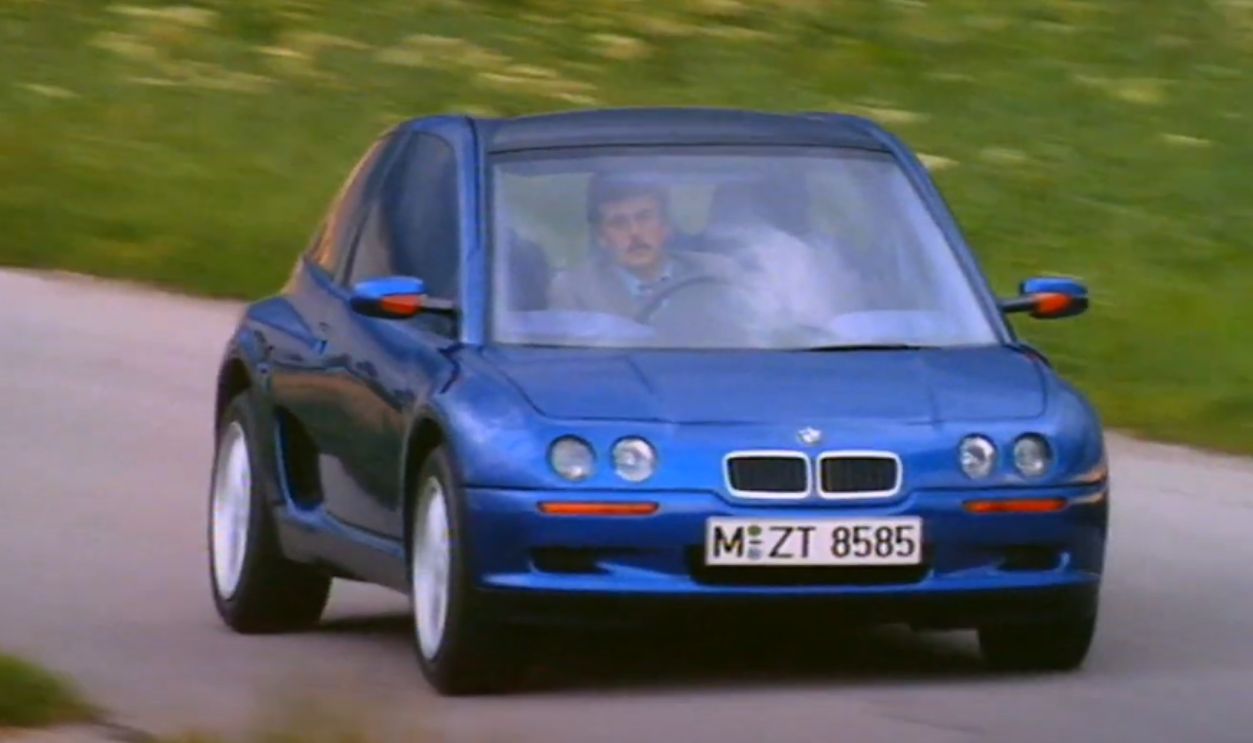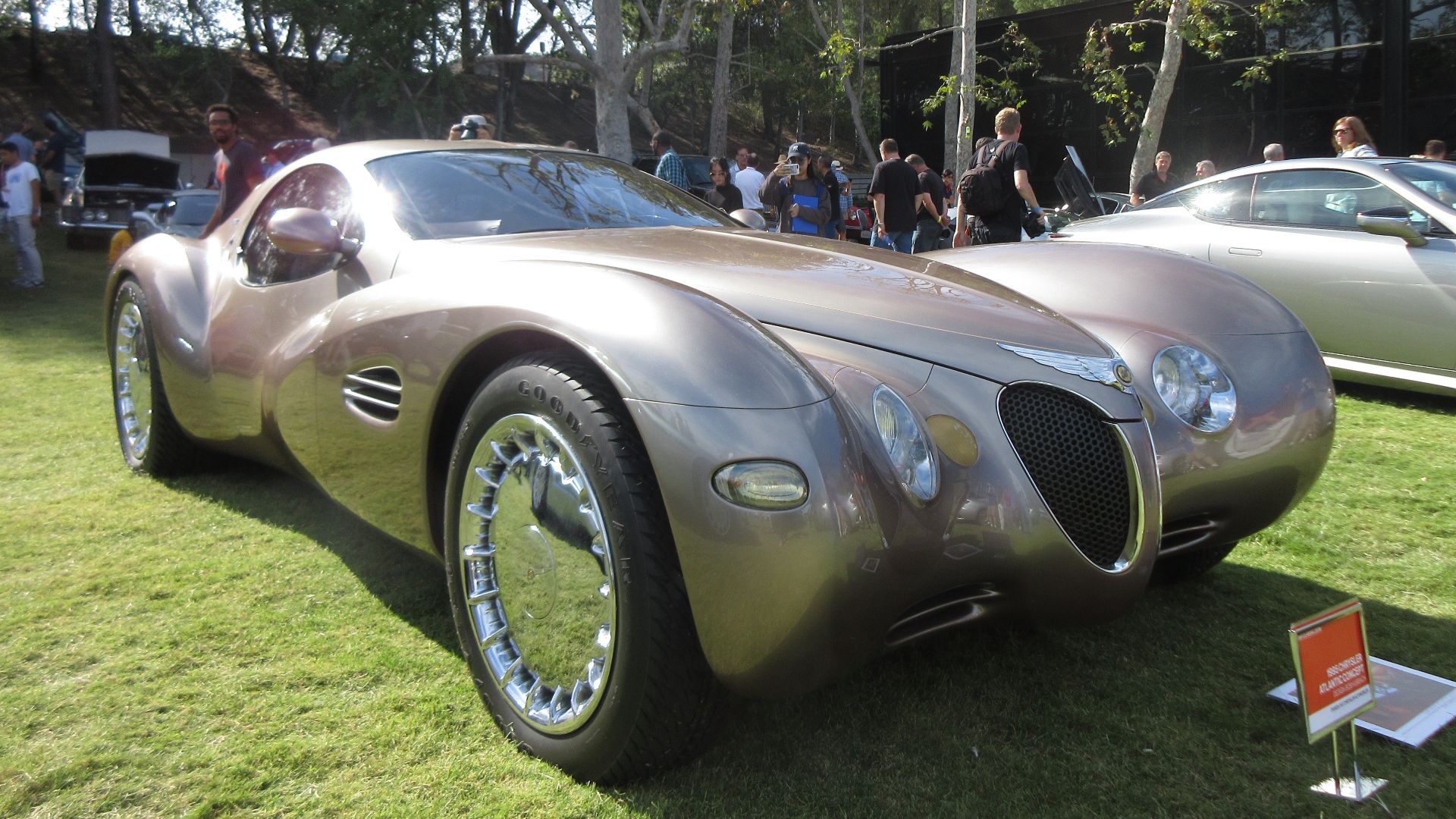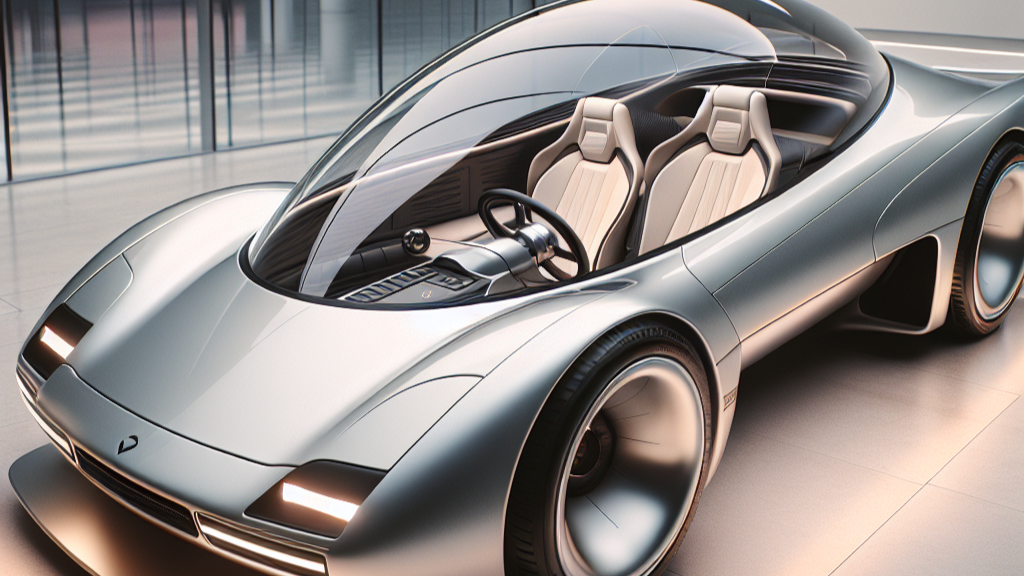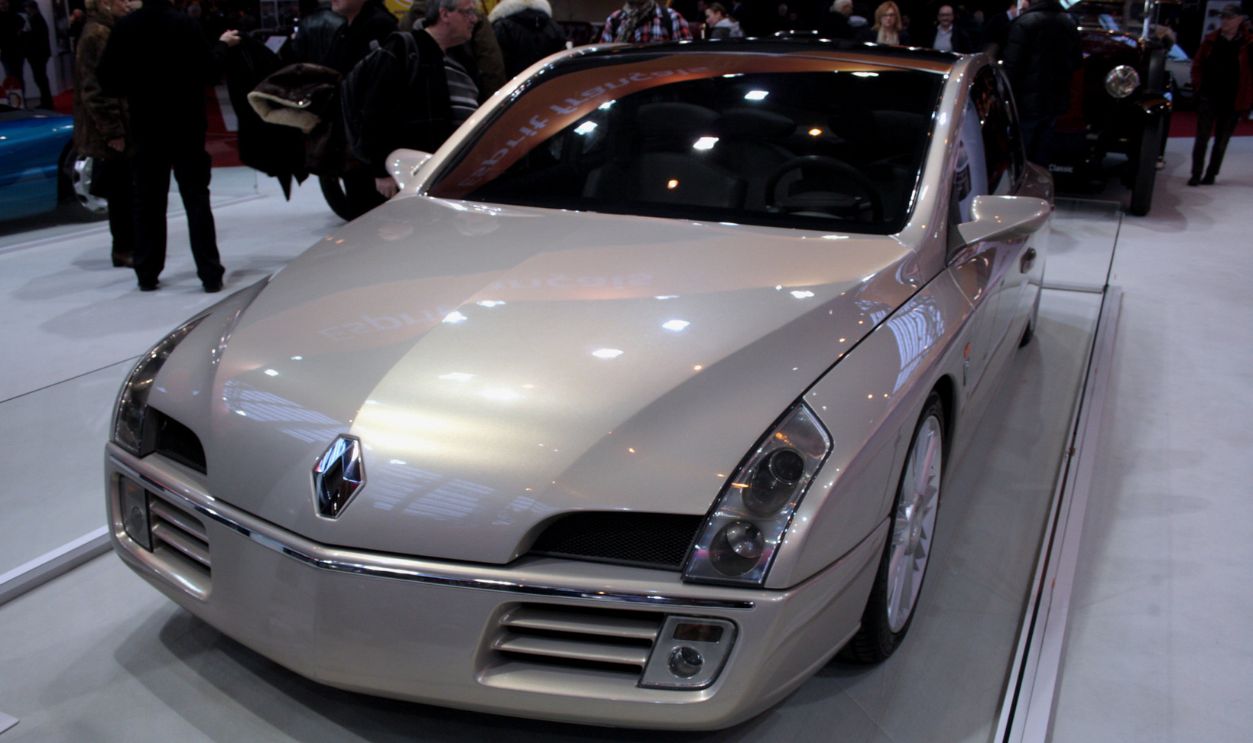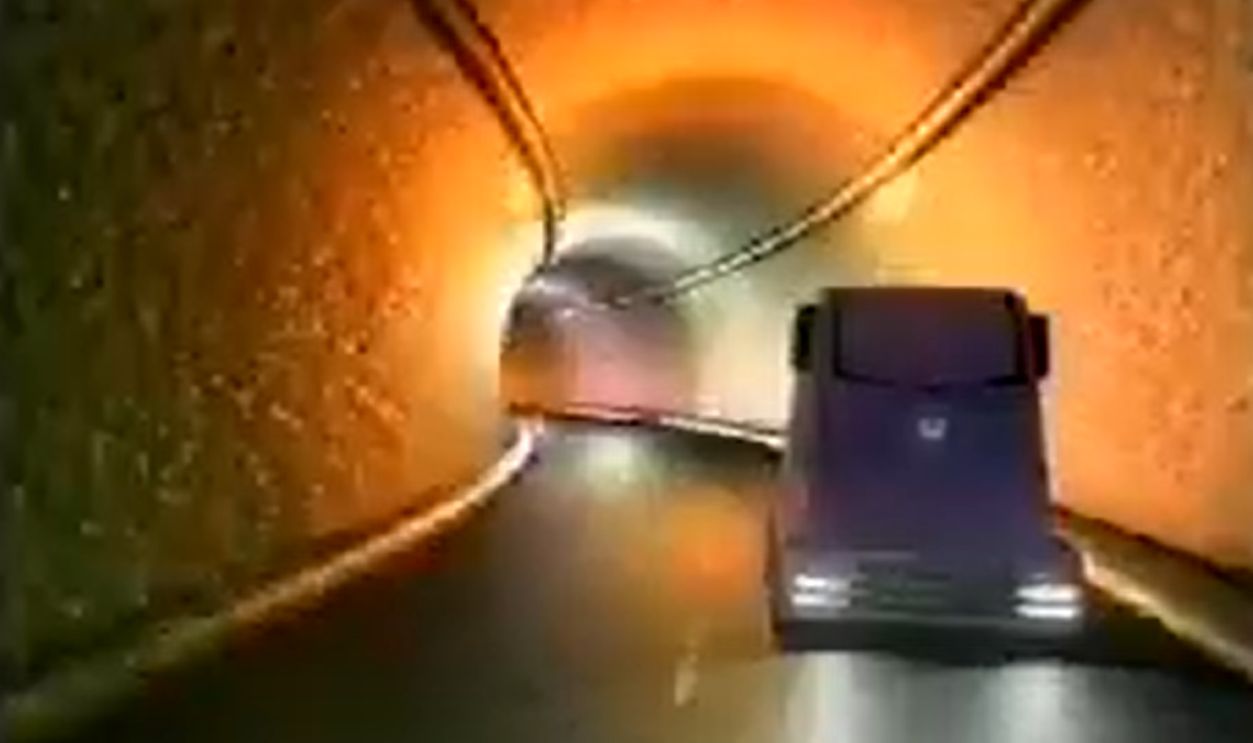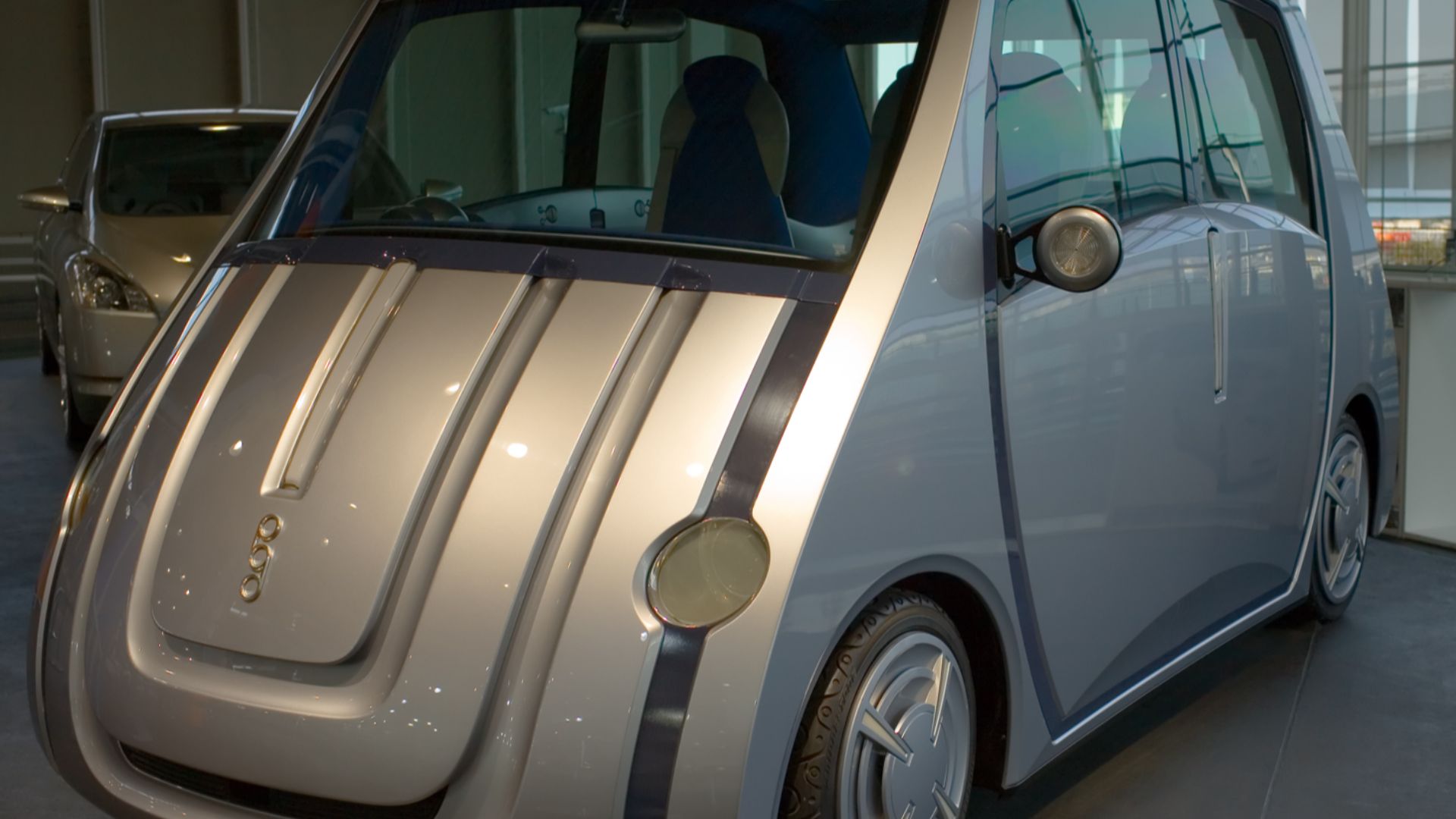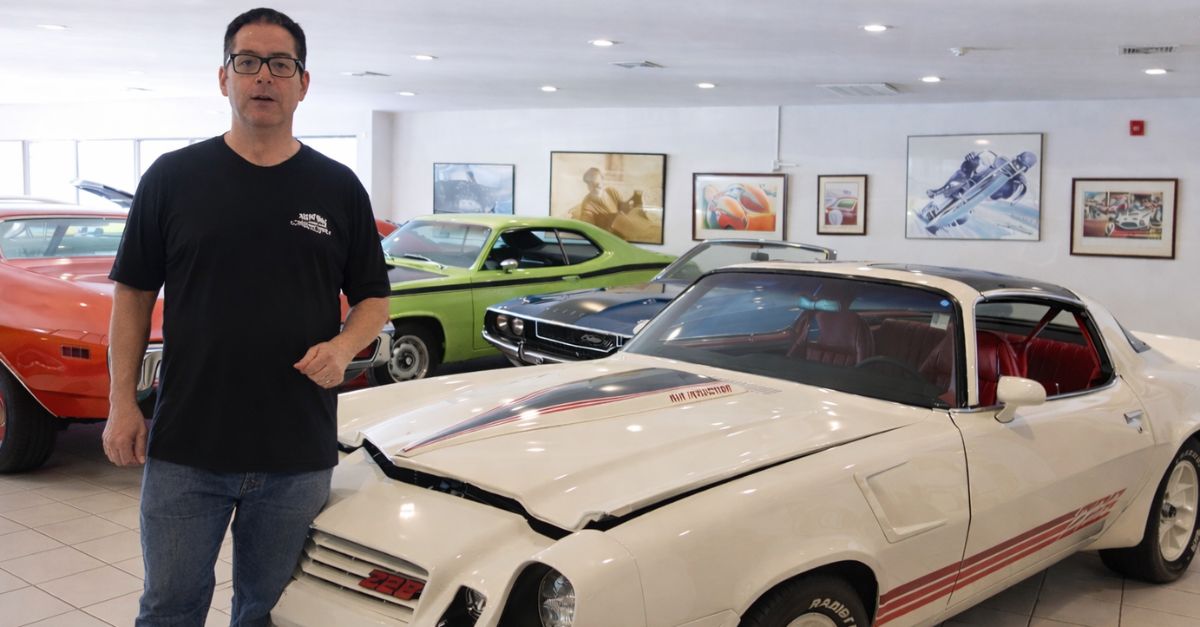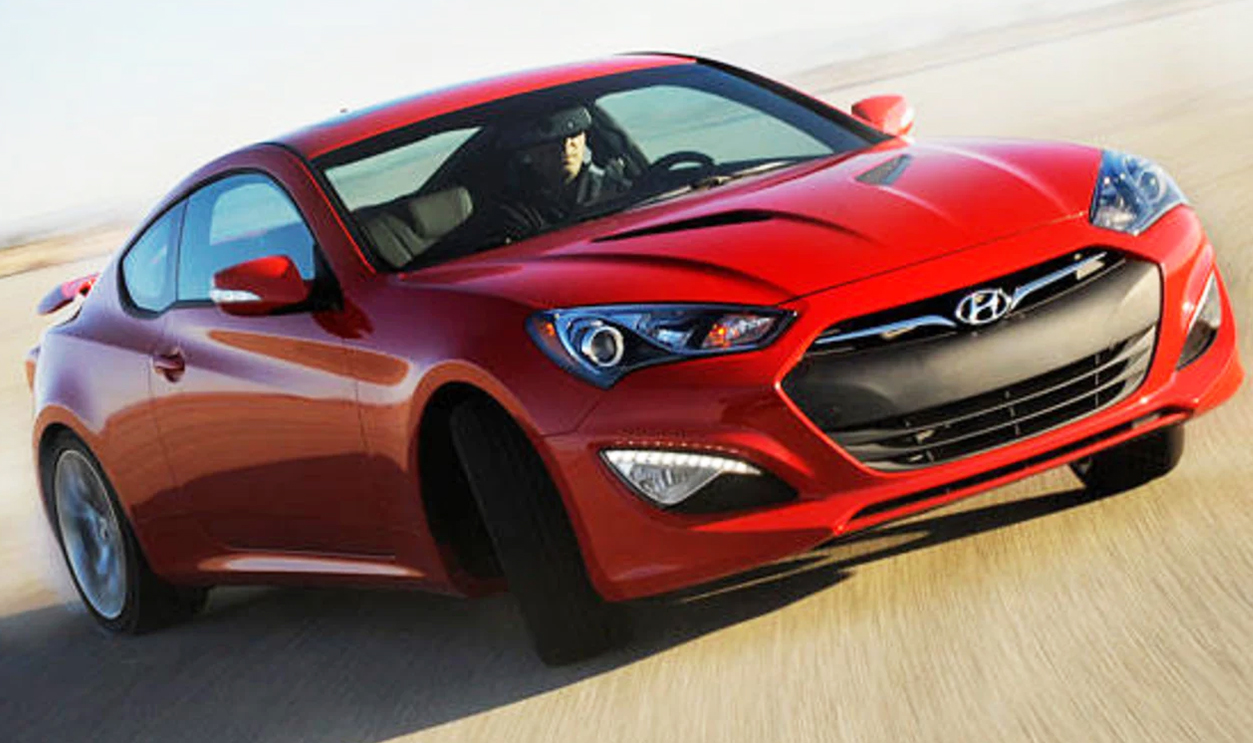A Decade Of Design Madness
The 1990s saw a perfect storm of technological ambition and aesthetic experimentation. With the Cold War over and the millennium looming, automakers worldwide treated concept cars like rolling sci-fi dreams. From amphibious minivans to joystick-controlled luxury coupes, concept cars in the 90s were daring, outrageous, and unforgettable. They pushed the industry forward—even when they never made it to production.
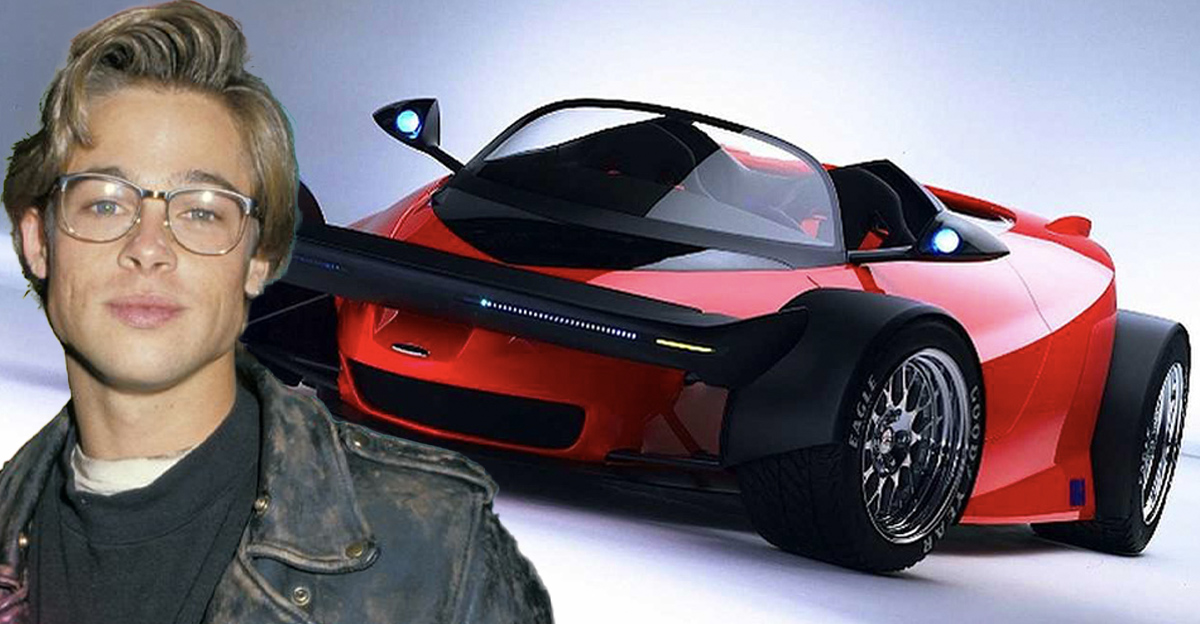
Renault Racoon (1992)
The Racoon looked like something out of a sci-fi movie—and acted like it too. Its amphibious capabilities allowed it to traverse rivers, while its carbon-Kevlar unibody and adjustable suspension made it ready for off-road fun. The interior was voice-activated, and the driver sat in a central position, flanked by two passengers. Renault designed it to operate in extreme conditions like arctic terrains or deserts.
Italdesign Lucciola (1993)
This charming four-seat hatchback was an early vision of the sustainable cars of today. The Lucciola offered a hybrid diesel-electric powertrain and featured drive-by-wire steering and throttle—cutting-edge tech at the time. Its spacious interior was created with flexibility in mind, allowing users to reconfigure seating and storage. While it never made it to production, the design later influenced the Daewoo Matiz. Giorgetto Giugiaro’s vision helped set the tone for efficient city driving in the decades to follow.
Pontiac Stinger (1990)
A fluorescent yellow-green plastic-bodied vehicle with interchangeable parts, the Pontiac Stinger was designed for fun-loving young adults. The concept included attachable accessories like camping gear, bike racks, and even a removable stereo that doubled as a boombox. Aimed squarely at the youth market, it featured a minimalist interior and digital displays. The asymmetrical doors and rotating seats added to its wild persona. Though not destined for production, it embodied GM’s push to appeal to Gen X.
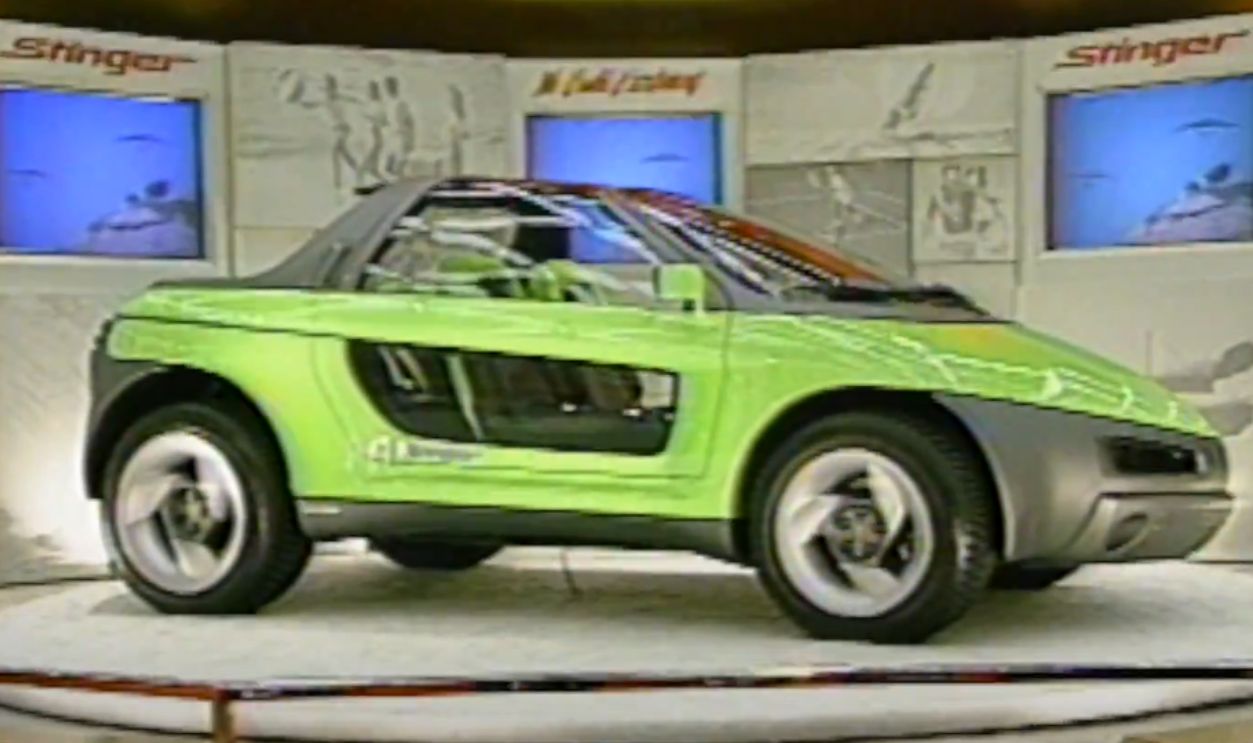 Pontiac Stinger/Ford Splash Prototypes | Retro Review, MotorWeek
Pontiac Stinger/Ford Splash Prototypes | Retro Review, MotorWeek
Ford Indigo (1996)
Inspired by IndyCar technology, the Indigo featured a carbon-fiber tub developed with Reynard Racing. Its 6.0L V12 produced 435 hp and delivered 0–60 mph in just over 4 seconds. The open-wheel design revealed pushrod suspension, while the active aerodynamics helped with stability at high speeds. Ford never intended to produce it, but the Indigo allowed engineers to test advanced manufacturing techniques and performance parts that trickled down into production supercars like the Ford GT.
Mercedes-Benz F200 Imagination (1996)
The F200 wasn't just a luxury cruiser—it was a rolling technology lab. Its joystick steering eliminated the traditional wheel, and rear-facing cameras replaced side mirrors. The car also introduced the concept of electro-transparent glass, which could change tint at the touch of a button. The 5.0L V12 under the hood offered a smooth, powerful ride. Several of the car’s innovations, including steering wheel controls and active suspension, eventually found their way into Mercedes’ production lineup over the next two decades.
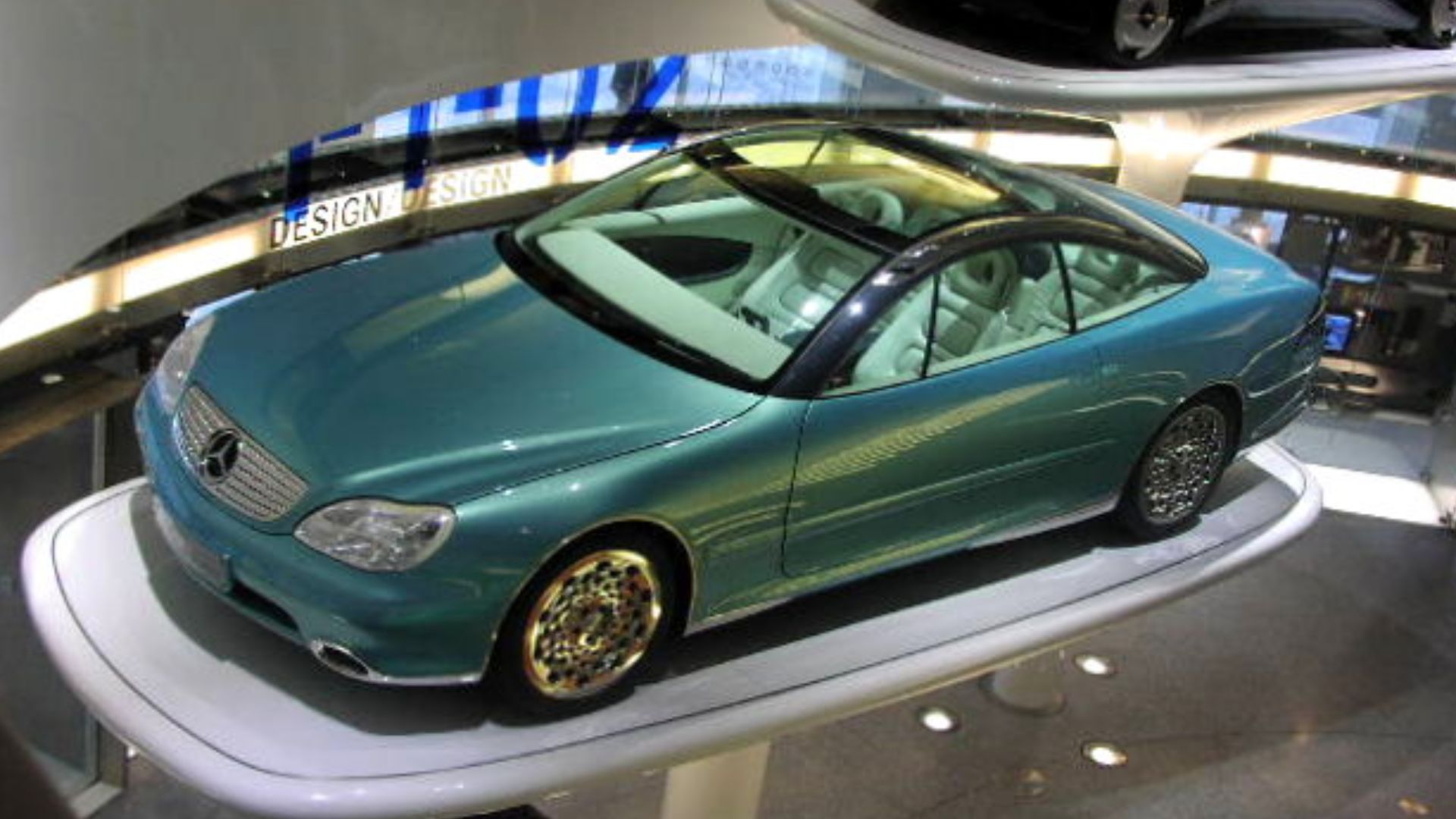 MartinHansV, Wikimedia Commons
MartinHansV, Wikimedia Commons
Dodge Copperhead (1997)
Meant as a more affordable counterpart to the Viper, the Copperhead emphasized handling over raw power. Its 2.7L V6 generated 220 hp and was mounted in a lightweight chassis designed for nimbleness. With a low-slung stance and sculpted bodywork, the Copperhead attracted attention at auto shows for its elegant aggression. Dodge claimed it would be “fun-to-drive” rather than a brutal beast, but unfortunately, the car remained a concept, shelved due to a shift in the company’s internal priorities.
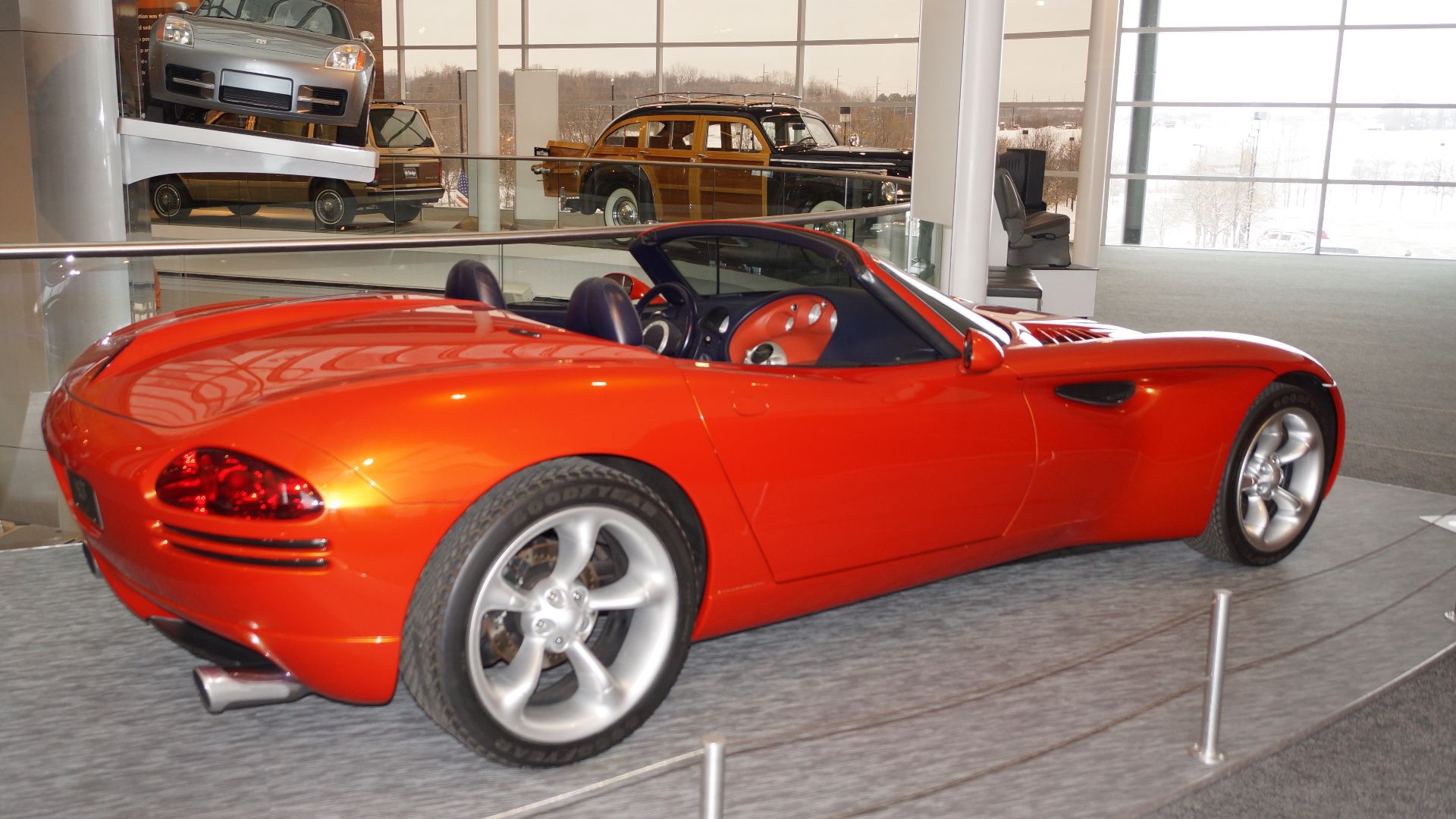 Greg Gjerdingen from Willmar, USA, Wikimedia Commons
Greg Gjerdingen from Willmar, USA, Wikimedia Commons
Peugeot Asphalte (1996)
The Asphalte was a tiny, lightweight roadster that challenged the concept of what a car should be. With a plastic canopy and motorcycle-style seating, it was more pod than passenger car. The driver’s seating position was upright, as if piloting a glider, and visibility was superb thanks to its all-glass canopy.
 Alf van Beem, Wikimedia Commons
Alf van Beem, Wikimedia Commons
General Motors Ultralite (1992)
The Ultralite showcased what a high-mileage car could look like if designed from the ground up. The carbon fiber unibody kept weight down to just 1,400 lbs, and its 111 hp three-cylinder engine pushed it to 135 mph while delivering 100 mpg. Gullwing doors and an aerodynamic teardrop shape made it look like a spaceship. Though GM never built it, the Ultralite helped inspire future hybrid and electric cars, particularly around weight-saving techniques.
BMW Z13 (1993)
With its central driver's seat—à la the McLaren F1—and motorcycle-sourced engine, the Z13 was one of BMW’s quirkiest creations. The layout gave the driver a commanding view, while the two rear seats provided surprisingly ample room. BMW designed it with urban Europe in mind, where narrow roads and limited parking made small cars attractive. Though it used a 1.1L K-Series engine from BMW’s motorcycle division, it was incredibly fuel-efficient and proved surprisingly refined for its class.
Chrysler Atlantic (1995)
The Atlantic was a love letter to the Art Deco era. Its teardrop shape, long hood, and flowing fenders evoked classic Bugatti design, especially the Type 57SC Atlantic. Under the hood, Chrysler engineers created a one-off straight-eight engine by joining two Neon four-cylinder blocks. The interior featured analog-style gauges with elegant chrome and wood accents. Though it never saw production, the Atlantic demonstrated Chrysler’s design prowess and foreshadowed the elegant lines seen in the Plymouth Prowler.
Nissan FX (1991)
The FX concept blended sports car design with ergonomic experimentation. Its canopy-style glass roof offered panoramic views, and the upright driving posture aimed to reduce fatigue. The car was equipped with all-wheel drive, a turbocharged inline-four engine, and active suspension for performance. Nissan packed the cabin with tech, including a digital dashboard and heads-up display. The FX’s most radical trait was its egg-like form—aerodynamic, organic, and unlike anything else on the market at the time.
Lancia Dialogos (1998)
This full-size luxury sedan concept was less about speed and more about redefining comfort and human-machine interaction. The Dialogos had rear suicide doors, no B-pillar, and seats that swiveled to greet passengers as they entered. The steering wheel could retract to allow autonomous driving (in theory), and the dashboard included speech recognition and adaptive interfaces. The Dialogos was the precursor to the Lancia Thesis, and many of its driver-centric ideas resurfaced in modern premium interiors.
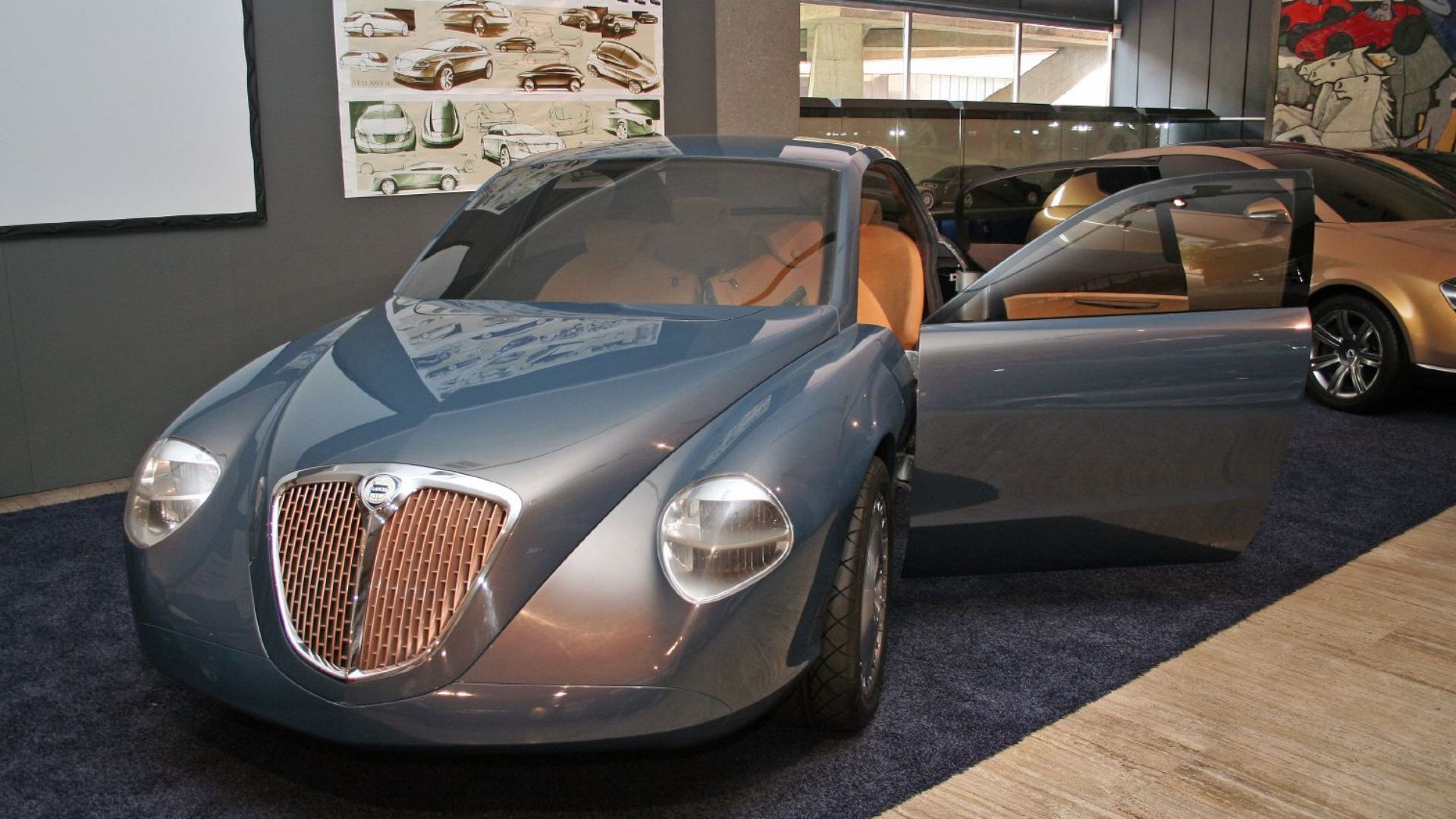 tonylanciabeta, Wikimedia Commons
tonylanciabeta, Wikimedia Commons
Suzuki Concept 1 (1997)
The Suzuki Concept 1 merged retro charm with futuristic functionality. A spiritual successor to the Suzulight, it sported round headlights, slab sides, and a two-tone pastel paint scheme. Inside, digital gauges and a flat floor maximized space, while an efficient 660cc engine made it perfect for city driving. Though playful in appearance, many of its styling elements would appear in the production Suzuki Lapin, a kei car icon in Japan.
 Suzuki CT-1 & UW-1 Concepts - Electric Utility Vehicles, Men and Motors
Suzuki CT-1 & UW-1 Concepts - Electric Utility Vehicles, Men and Motors
Italdesign BMW Nazca M12 (1991)
With its carbon fiber body, canopy-style doors, and 5.0L V12 engine from the BMW 850i, the Nazca M12 was a stunning fusion of German engineering and Italian passion. Designed by Giugiaro, it had a top speed of over 190 mph and looked like it belonged on a racetrack or movie set. Three prototypes were made, including a roadster. Though BMW declined to green-light it, the Nazca remains one of the most revered concept cars of the 90s.
 Hitman from United Kingdom, Wikimedia Commons
Hitman from United Kingdom, Wikimedia Commons
Renault Initiale Paris (1995)
A luxurious take on the family MPV, the Initiale Paris offered three rows of lounge-like seating under a massive glass dome. The concept featured six doors—four traditional and two gullwing—allowing easy access to the plush interior. Inside, a high-end audio system, wood finishes, and ambient lighting made drivers feel like they were in a private jet. It was a preview of Renault's ambition to dominate the luxury minivan segment and paved the way for vehicles like the Vel Satis and Avantime.
Honda Fuya-Jo (1999)
Designed for Japan’s club-hopping youth, the Fuya-Jo was equal parts party bus and daily driver. Its tall roof allowed occupants to stand while riding, and the interior was like a nightclub DJ booth, complete with LED displays and joystick-style controls. The car's squared-off body looked like a moving speaker cabinet. Honda’s goal was to challenge preconceptions about what a car could be—and to score points with subcultures that valued style and individuality over speed and utility.
Ford GT90 (1995)
Arguably one of the most legendary concept cars of the decade, the GT90 was built on a Lincoln chassis and packed a quad-turbocharged 6.0L V12 producing 720 hp. Its estimated top speed of 235 mph was theoretical, but impressive. The car’s jagged "New Edge" design language influenced future Fords. Built with ceramic heat shielding from the space shuttle program, the GT90 was an incredible technological showcase with supercar aspirations.
 Mark Woodbury from England, Wikimedia Commons
Mark Woodbury from England, Wikimedia Commons
Mitsubishi HSR-V (1991)
The fifth entry in Mitsubishi's High-Speed Research series, the HSR-V featured everything from active aerodynamics to four-wheel steering. Its adaptive suspension could lower or raise the car based on speed. The cabin boasted digital screens and a rudimentary AI assistant. Built largely from carbon composites, the HSR-V had an eye on future tech, not production feasibility. Mitsubishi used it to test autonomous driving concepts and vehicle stability systems that would become common decades later.
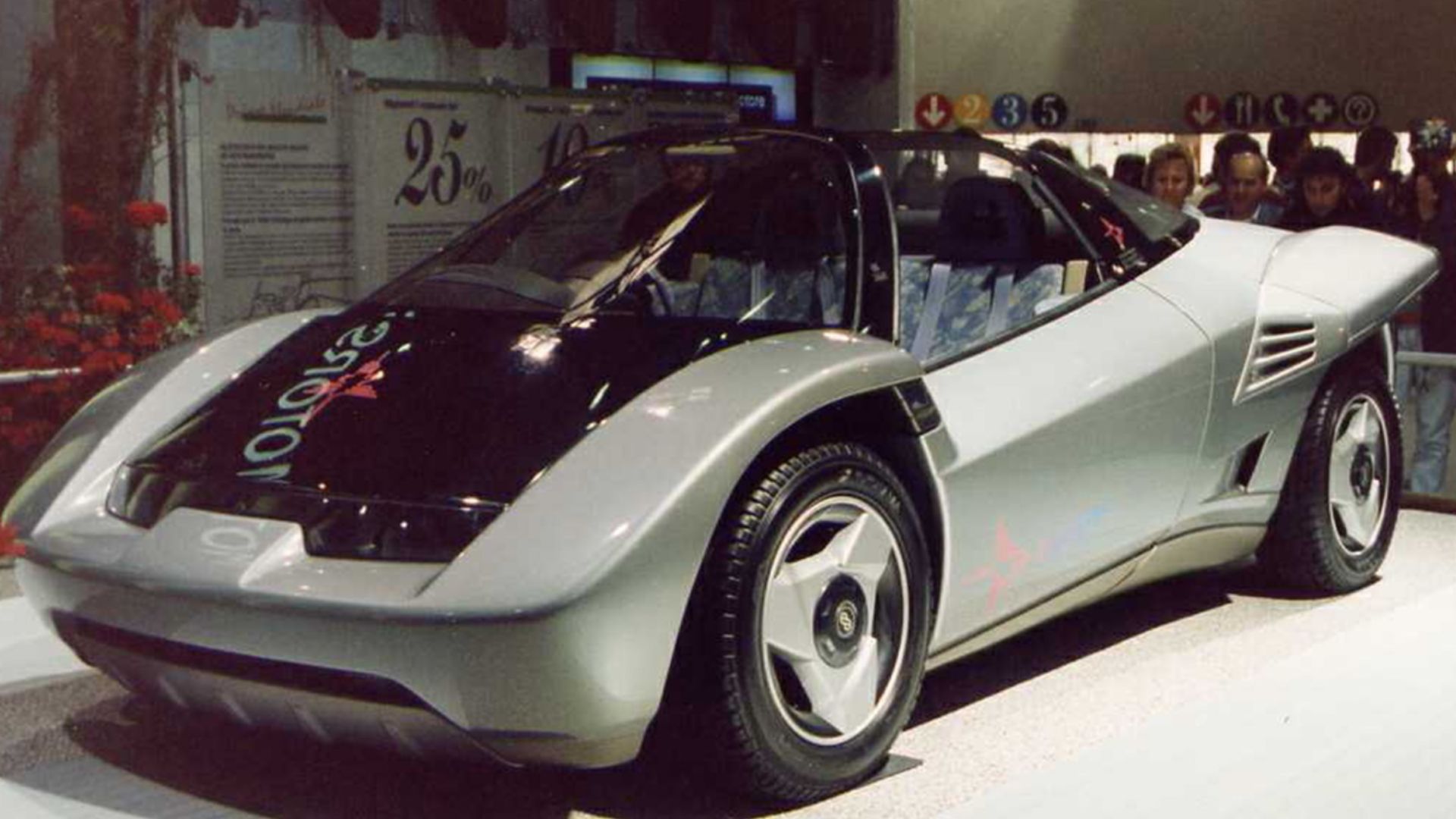 Andrea Volpato, Wikimedia Commons
Andrea Volpato, Wikimedia Commons
Alfa Romeo Scighera (1997)
Crafted by Italdesign, the Scighera combined Italian beauty with motorsport aggression. Underneath its carbon-fiber skin was a 3.0L twin-turbo V6 making 400 hp, allowing 0–60 in under 4 seconds. Its aluminum chassis and full-time AWD made it track-capable. Though only one prototype was ever built, it generated enormous buzz and reportedly inspired the developers of Gran Turismo. Alfa Romeo never pursued production, but the Scighera remains a cult favorite among concept enthusiasts.
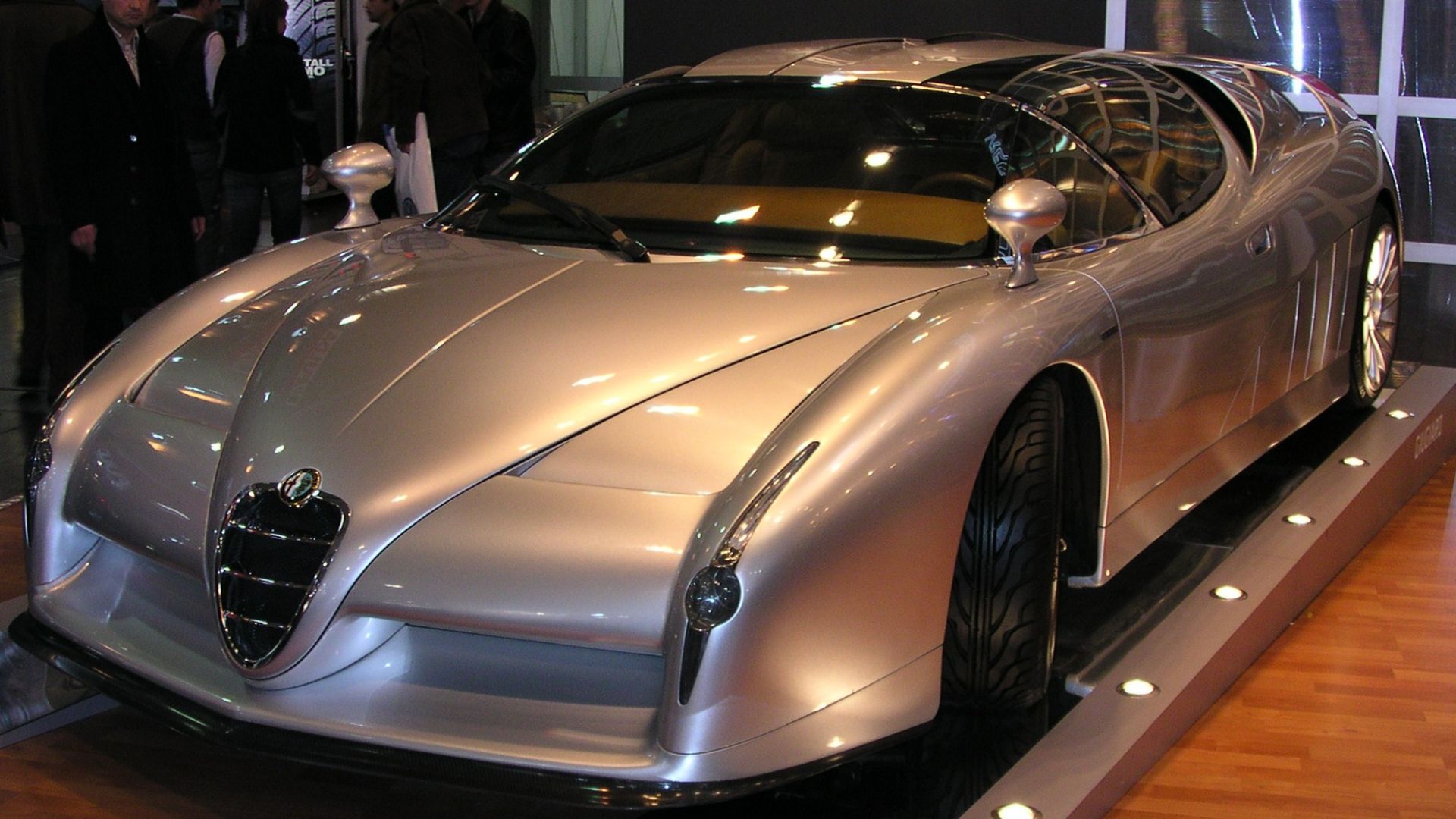 Norbert Schnitzler, Wikimedia Commons
Norbert Schnitzler, Wikimedia Commons
Audi Avus Quattro (1991)
The Avus was a mirror-finished, mid-engined dream machine that looked like it was built for an alien overlord. Its 6.0L W12 engine was only a mock-up, but it previewed Audi’s future powertrains. The all-aluminum body highlighted the benefits of lightweight construction. The Avus introduced themes—like Quattro AWD, LED lighting, and ultra-clean surfaces—that continue in today’s Audis.
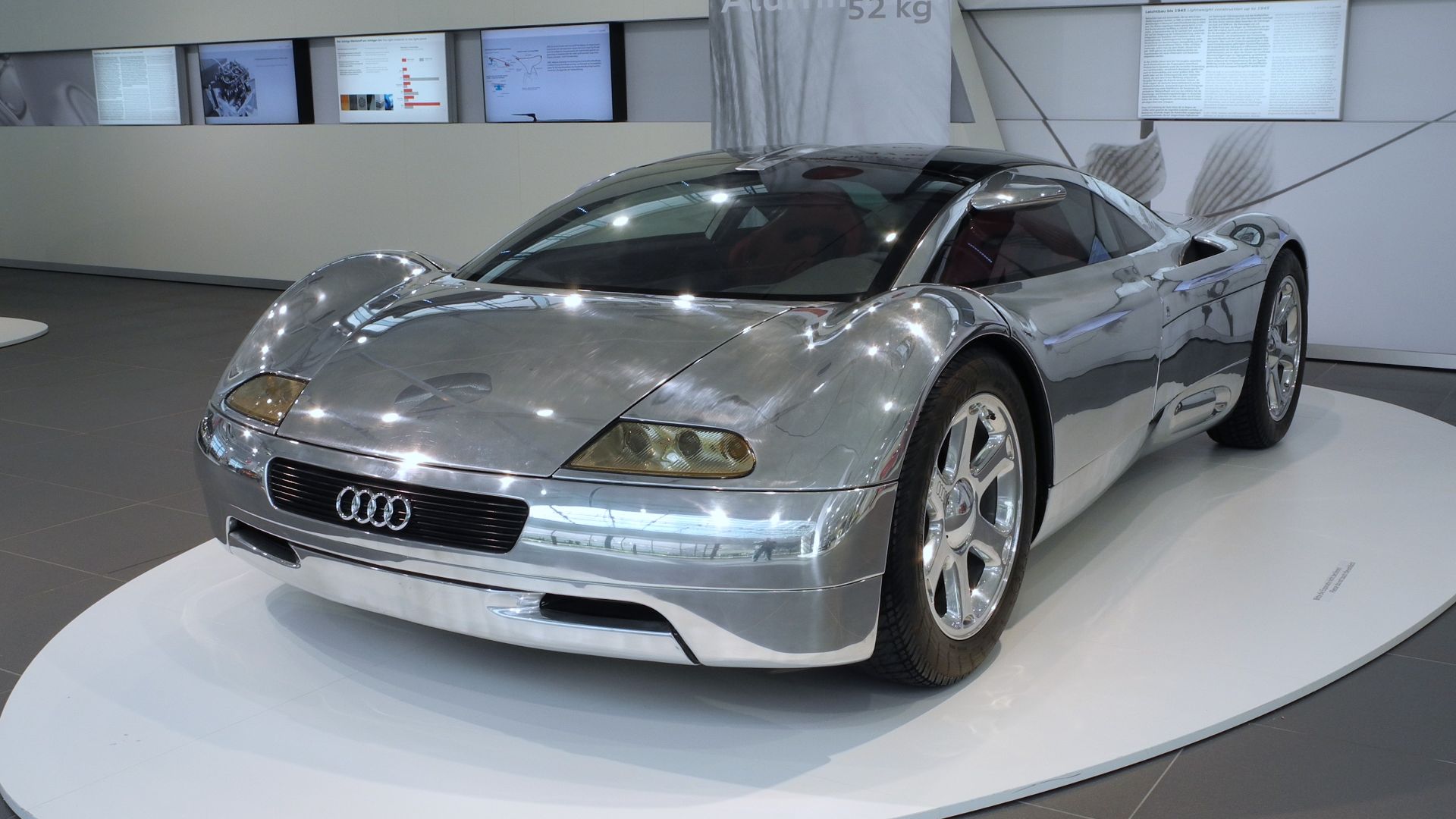 Hubert Berberich (HubiB), Wikimedia Commons
Hubert Berberich (HubiB), Wikimedia Commons
Citroën Xanae (1994)
Part MPV, part spaceship, the Xanae offered joystick steering, a full digital interface, and a 360-degree view from its bubble-like greenhouse. The cabin was designed for flexibility, with flexible seats and hidden storage. Citroën also included a rudimentary voice assistant and climate zoning. The design emphasized comfort and family utility while still looking otherworldly. Though it never went into production, its interior tech found life in later Citroën models like the Xsara Picasso.
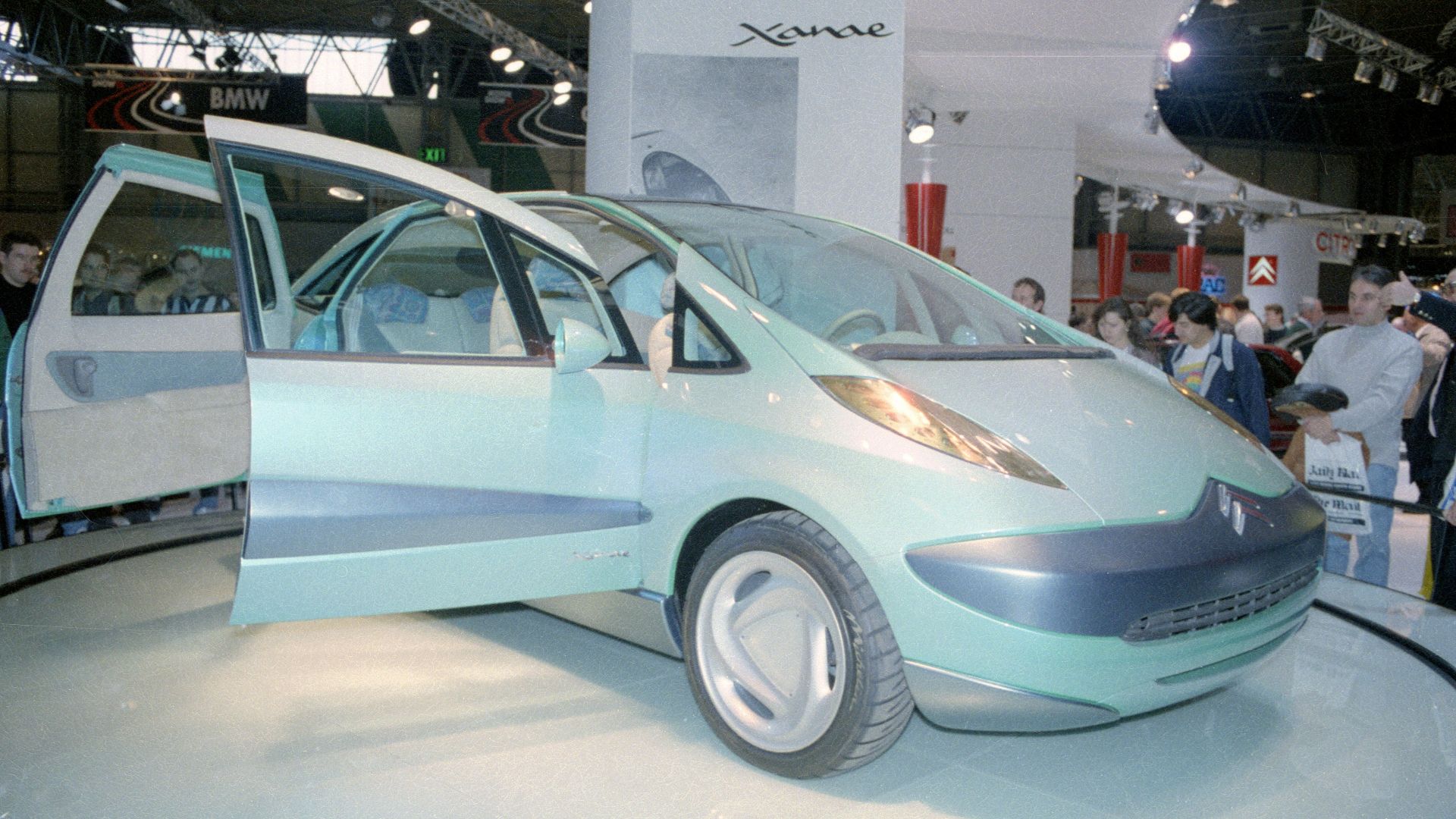 Mike Roberts from London, United Kingdom, Wikimedia Commons
Mike Roberts from London, United Kingdom, Wikimedia Commons
Bertone Blitz (1992)
A full-electric concept way ahead of its time, the Bertone Blitz was a streamlined, aerodynamic city car with a jet-like profile. Built almost entirely from composite materials, it featured in-wheel electric motors and a glass canopy that flipped forward for entry. Its design emphasized minimal drag and urban maneuverability, with a body that looked like a wind tunnel sculpture. Though it was never road-ready, the Blitz proved that electric cars could be both stylish and futuristic.
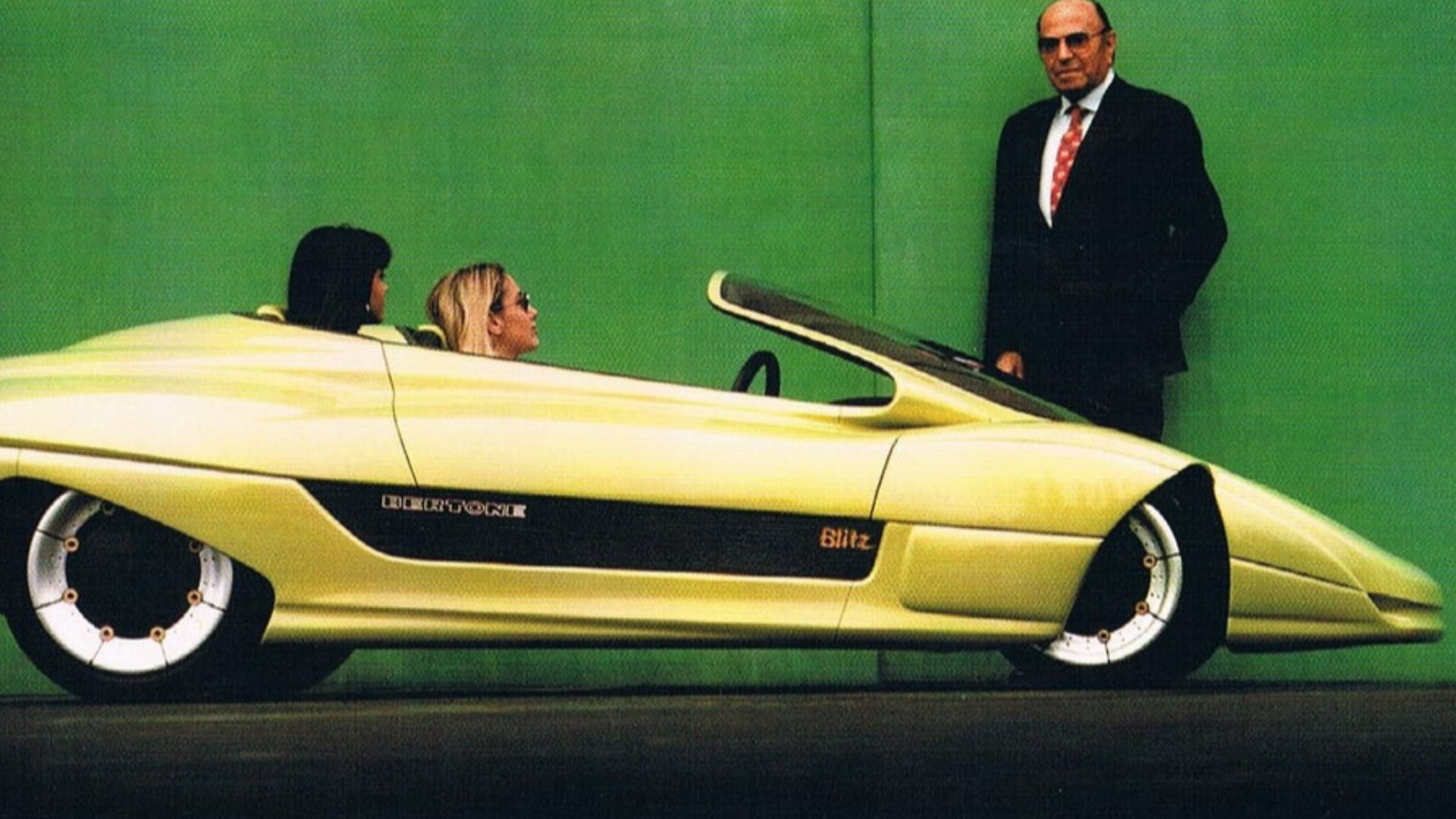 Unknown photographer, Wikimedia Commons
Unknown photographer, Wikimedia Commons
Subaru Streega (1995)
A strange fusion of SUV, hatchback, and rally car, the Subaru Streega debuted with aggressive fender flares, massive wheels, and an elevated stance. It featured a 2.0L turbocharged boxer engine with AWD and was designed for extreme terrain as well as city driving. Inside, it offered a digital instrument cluster, suede-trimmed racing seats, and flexible cargo options. The Streega embodied the adventurous energy of Subaru and hinted at the coming crossover boom of the 2000s.
 1995 Streega, Subaru-Impreza. com
1995 Streega, Subaru-Impreza. com
Chevrolet Corvette Indy (1990)
Though first shown as a late-80s concept, the Corvette Indy reached its wildest evolution in the early 1990s. It sported a mid-mounted 5.7L twin-turbo V8 producing over 600 hp, paired with AWD and four-wheel steering. Advanced electronics controlled its active suspension and cockpit functions, and the scissor doors added dramatic flair. With its sleek aero shell and futuristic cabin, it was meant to preview the technological direction of future Corvettes—even though it was far too complex for production.
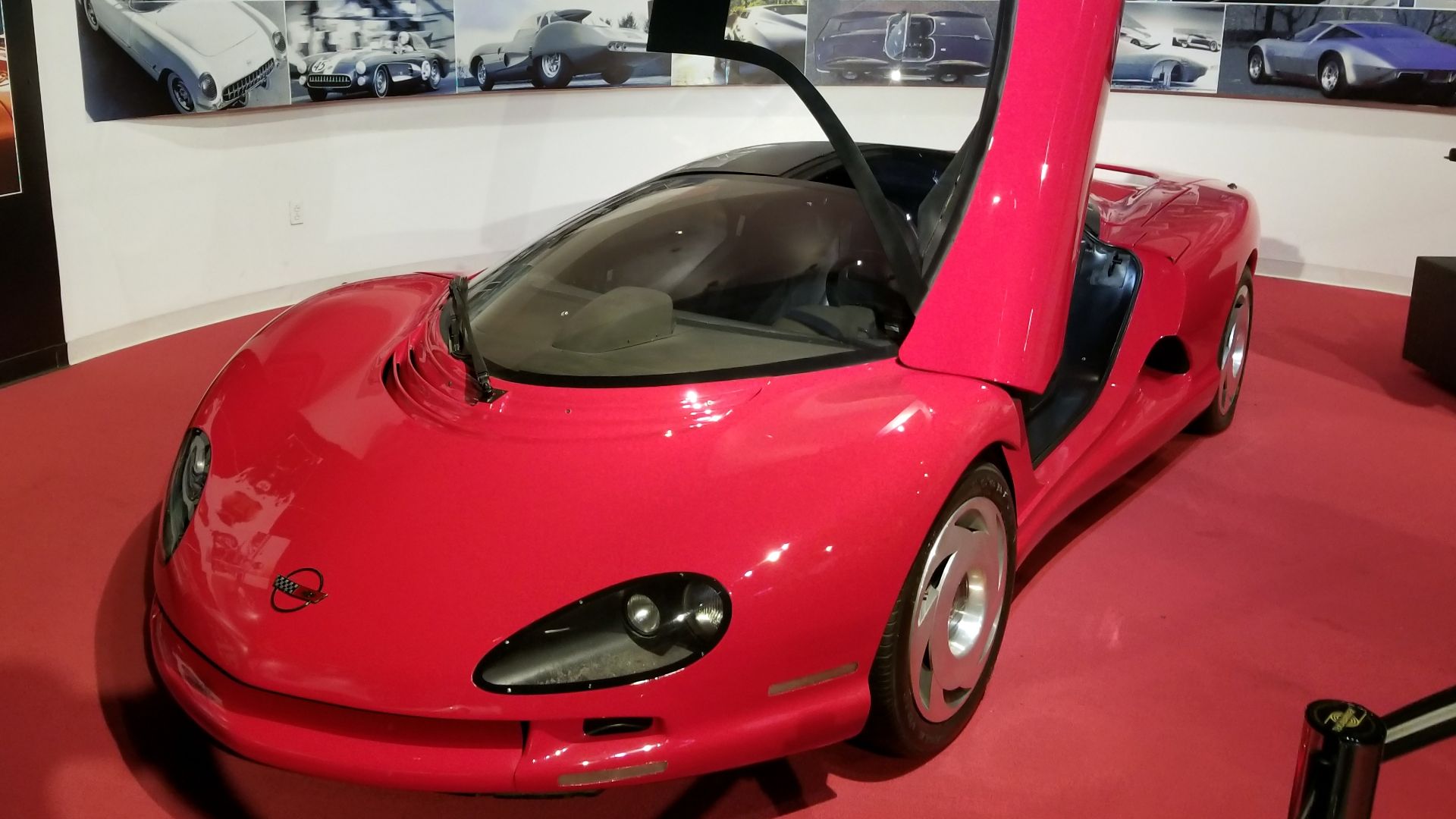 Cartwright80, Wikimedia Commons
Cartwright80, Wikimedia Commons
Toyota Pod (1999)
Toyota’s Pod was one of the most emotionally intelligent cars ever conceived. Developed in partnership with Sony, it featured biometric sensors to detect the driver’s stress levels, facial recognition software, and external mood indicators—lights that changed color to reflect emotional states. It even offered "encouraging" messages to anxious drivers. The Pod wasn’t just about transportation; it was about companionship. Although it never went into production, the Pod anticipated the emotionally responsive tech we now see in AI-driven systems.
You May Also Like:
Concept Cars That Never Touched The Streets
10 Awesome Cadillac Concept Cars That Didn't Make It To Production

